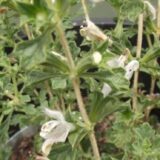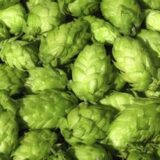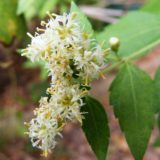Table of Contents
Plants That Provide Naturally Sedating Effects

Natural Sedatives: What Plants Are Like Sedatives?
In today’s medicine, especially in Western culture, there are a variety of sedatives and tranquilizers which are capable of fully knocking someone out. These sedative medications are backed by tons of experiments, knowledge, research, clinical trials, and actual historical use. One thing that people fail to remember, however, is that these medicines that work so excellently today are the current end result of sedative medical evolution.
This means that there will be even more effective sedatives in the future; and also suggests that there are plants that have yet to be discovered, and techniques which have yet to be implemented. This also means that historical sedatives may not have been so ineffective, as today’s sedatives are often too effective. There is also the idea that there could have been equally as effective sedatives regularly employed in ancient medicine, which could have rivaled the effectiveness of today’s sedatives.
The truth is that many plants which exist in nature have always offered excellent sedating effects. Some of these plants have been discovered, and some of those have been exploited (sold, commercialized, cultivated, etc). There are some plants which are known natural sedatives, which have not been exploited. And then still, there are plants out there yet to be discovered which potentially offer strong, maybe stronger than which is known to man, sedative effects.
List of Plants With Sedating Effects
There are many other plants which are highly regarded for their sedation properties. Here is a full list of plants with sedating effects.
Blue Lotus Flower (Nymphaea caerulea)
Blue Lotus flower is probably one of the best herbs for sedation. It’s effects have been compared to that of cannabis or xanax. It can be smoked or also brewed into a tea. It is frequently used as a xanax substitute (in tea form) or as a marijuana substitute (in smoked or vaped form). It has been known to relieve stress, reduce anxiety, and provide a calming, pleasant sedation-like effect. Some people experience euphoria. Quality means everything when it comes to Blue Lotus, as some blends are old or lack adequate quantities of the active psychoactive constituents. Just like marijuana, some strains are stronger than others. One of the best blends is known as “Jolly Lotus,” sold by Edge77.
Kanna (Mesembryanthemum expansum and Sceletium tortuosum)
Kanna is also known as Channa or Canna, and has been chewed in a root-state, and also turned into a powdered extract. There are many preparations and traditional rituals surrounding Kanna. Kanna is one of the stronger sedatives on the list and can induce a fully subdued-like state. It is sometimes used as a Xanax alternative, despite being a natural, unmanufactured plant.
Ashwagandha (Withania somnifera)
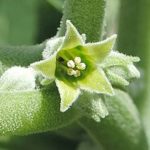
The Ashwagandha plant is native to North Africa, and the parts of Europe and Asia that are close by. It has been smoked and is said to provide such relaxing, sedating effects that one does not even dream when going to sleep. There are some beverage preparations made from the fruits.
Dama da Noite (Cestrum laevigatum)
This herb has been very under-researched, however, nonetheless has been employed throughout various parts of South America (most notably in Chile) and used as a marijuana substitute and calming drug.
Hops (Humulus lupulus)
Hops is a very popular ingredient in beer, usually for flavor, however, it would also help explain the total sedated-effect that lies at the end of the inebriation train. Regardless of its presence in beer, Hops has been a long-known natural sedative, and a powerful one at that. It has been most prevalent throughout Europe, but is present around the world today, so long as the zone is temperate.
Gi’-i-Wa (Lycoperdon marginatum)
Gi’-i-Wa is very common in Mexico and has been a favorite sleep-inducing and relaxing drug of the Mixtec Indians. Though there is no religious ceremony associated with it, it has been used for a variety of sedating effects, even in war. Accounts exist of sorcerers using, essentially, an overdose of Gi’-i-Wa to cause harm or put their enemies to sleep so armies can move undetected.
Artic Root (Rhodiola rosea)
Although Artic Root is most commonly used in Chinese and Scandinavian traditions, it is well-understood around the world today to reduce fatigue from stress, and to calm and relax users. It has many other, very positive effects on the mind and body, however, has become a commonly employed natural sedative today.
Holy Basil (Ocimum sanctum)

Many questionable sources have listed Holy Basil as a natural sedative, however, many more profound, scholarly sources, state clearly that Sacred Basil is not even psychoactive. Still, when it is COMBINED with other plants, such as betel quids, it can create very strong sedative effects.
Yun-Shih (Caesalpinia sepiaria)
This plant of China, Nepal and Tibet, has been known for its ability to relax a user, even making them feel weightless. Some people experience a sort of levitation or sensation of flying. The relaxing effects can be accompanied by staggering inebriation in higher doses.
Dita Tree (aka Alstonia scholaris)
The Dita Tree has been hailed a strong, natural sedative throughout Asia, where it is also native. It is also commonly employed for its calming and relaxing properties in Australia.
Angel’s Trumpet (Brugmansia arborea)
As commonly employed as Brugmansia arborea is for its variety of psychoactive effects, one of the most common is the relaxing, peace-inducing effects that come from a special drink that is made from the powdered seeds. In higher doses it acts as a hallucinogen, but in lesser doses, it can be used as a sedative.
Balm (Melissa officinalis)
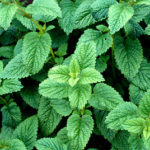
Among its many uses, Balm has been used to brew an herbal tea. The leaves can also be smoked or used as an incense. The most powerful sedating effects from Balm come from ingesting the tea of fresh leaves. It has a very rich history throughout German and Austian cultures.
Passion Flower (Passiflora spp.)
The Passion Flower is well known for its natural sedative effects. This plant is frequently used in “legal highs” that are sedatives, and in herbal teas focusing on relaxing, serenity, meditation, and peace. The fruits are also said to contain relaxing properties.
Kava Kava (Piper methysticum)
Although Kava can be used as a social drink, it is most definitely a relaxing drug. Kava has been known to help shaman induce trance-like states and is very popular in a number of ceremonies. It is well known for its calming effects throughout Polynesian cultures and grows obscurely throughout a number of island-like territories in tropical regions of the world.
Marijuana (Cannabis sativa)
Marijuana, also typically called “weed” among many other names, has been used for its sedative properties throughout history. It has been smoked, vaporized, consumed, and worked into a number of other concoctions. There are many strains of marijuana, some are more relaxing than others. Most marijuana plants will thoroughly subdue a participant, no matter how the drug is ingested.
Wild Dagga (Leonitis leonurus)
Wild Dagga, also known as Dacha, is a well known narcotic in Africa. It is especially popular in the tribe of the Hottentots. Wild Dagga is sometimes smoked as a marijuana substitute, specifically for its relaxing effects.
Siberian Lion’s Tail (Leonurus sibiricus)
Siberian Lion’s Tail originated in China and is very popular for its relaxing effects there (both throughout history and in present day cultures). It was transplanted to the Americas and is also very prevalent in use throughout Brazil. This is well known as a marijuana alternative and has been included in a variety of smoking blends and herbal tea blends for its calming and relaxing effects.
Gotu Kola (Centella asiatica)
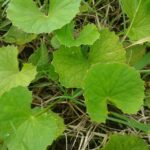
The Gotu Kola tree grows in Asia and Africa. Typically the nuts are ingested or chewed. The Gotu species possesses strong sedating effects that is well-known in the areas by which it is employed. It is important to note that only the Gotu Kola species of the Cola trees is used as a sedative. The rest of the species have uses for their other psychoactive constituents, however, the Gotu Kola is the only one used as a natural sedative.
Valerian (Valeriana officinalis)
Valerian is sacred in ancient Germanic culture, and has a significant history throughout European folklore. It is also prevalent throughout Central and South American traditional use. Extracts, Chews, Teas and Beverages can provide powerful sedating effects. Valerian is typically regarded as one of the weaker plants used as sedatives; and it mostly relies on its ability to induce sleep and relaxation to be considered sedating. Though, many people use Valerian root extracts to create a strong, deeper sleep with great success.
Lavender (Lavandula angustifolia)
Lavender admittedly is not one of the stronger sedatives on the list, in fact, it may even be the weakest, however, it no doubt has sedative effects. All cultures around the world have used lavender in a tea form, an incense form, and in smoking blends to induce a calming and relaxing effect. It also smells great!
Last Notes on Natural Sedatives
Pretty much any plant with the indole alkaloid reserpine is a natural tranquilizer or sedative. There are sedative effects from plants which improve serotonin levels and imbalances. There are sedative effects from plants which provide scopolamine, and are hallucinogenic in high doses. Plants can have sedating effects when combined with other plants. Many times, sedatives are created in a beverage form, being the result of a concoction of many ingredients. There are shamanic, religious, recreational, and other uses for plants documented as sedatives. There are likely many plants already discovered which offer sedative-like effects, which have yet to be realized. There are also many plants in the wild which probably offer sedation effects, yet to be discovered altogether.

